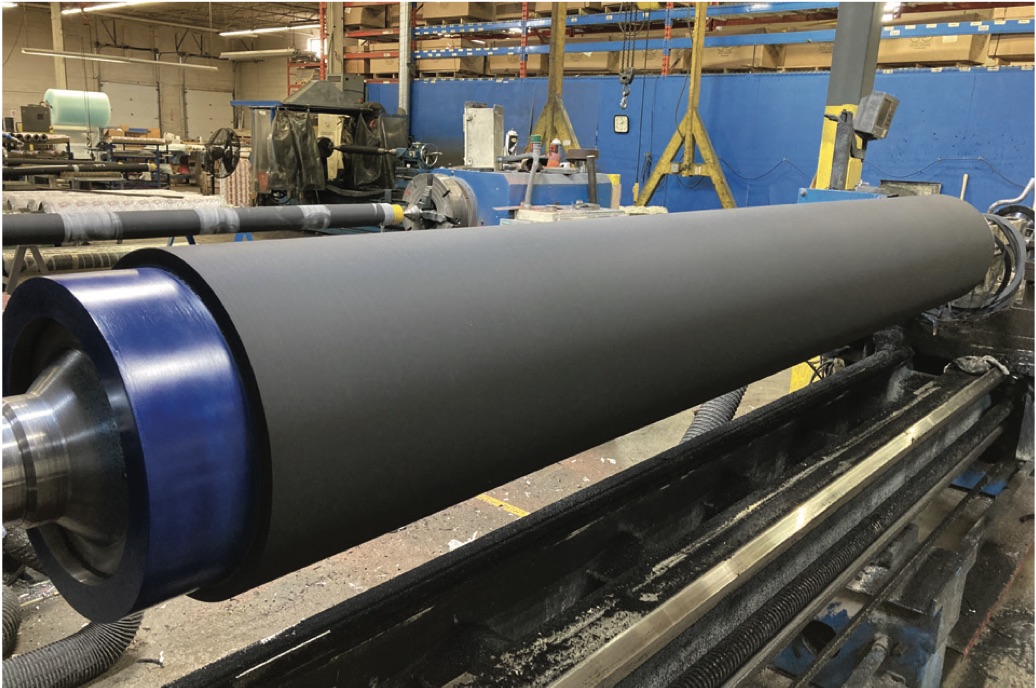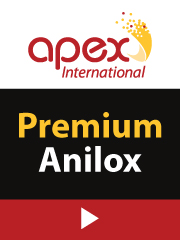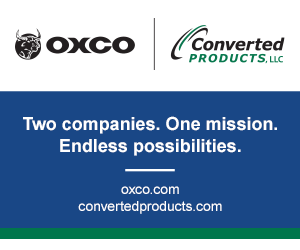Roller Solutions Uncovered
- Published: April 08, 2022
By William Bradley, American Roller Vice President of Business Development
 Cleaning a roller’s working surface is a critical aspect of regular machine hygiene but specifics of cleaning chemistry and methods are rarely reviewed and revised. Everyone knows that a clean roll produces higher quality materials and generates less scrap than a dirty roll; however, did you know that some cleaning chemicals and solvents may actually be doing more harm than good?
Cleaning a roller’s working surface is a critical aspect of regular machine hygiene but specifics of cleaning chemistry and methods are rarely reviewed and revised. Everyone knows that a clean roll produces higher quality materials and generates less scrap than a dirty roll; however, did you know that some cleaning chemicals and solvents may actually be doing more harm than good?
Despite the relatively short contact period with a roller’s surface, incompatible chemicals and solvents can do a lot of irreparable damage to a roll’s covering. Long-term chemical damages often fly under the radar because changes are not always rapid or obvious. Just because a cleaner is really good at cleaning residue off of a roll doesn’t mean that it’s necessarily good for the rubber, plasma coating, chrome plating, etc. on its working face.
Obvious chemical or solvent damages are realized quickly because it only takes an instance or two to determine that a particular chemical is clearly incompatible with a roll covering (use of that chemical is generally discontinued shortly thereafter). Less obvious changes in roll coverings such as durometer gains/losses, dimensional changes, changes to rebound properties, increased tackiness and other undesirable changes often present after a good period of run-time. The root cause of these symptoms affects production lines in many different ways and can be very difficult and expensive to track down.
Knowing what chemicals are safe is paramount to achieving a covering’s full-service life and keeping processes running smoothly long-term. Cleaning chemicals and solvents may have been qualified for a roll covering used many years ago but may not be compatible with today’s roll covering.
Example: Historically, a Nitrile roll covering was cleaned with deodorized kerosene which quickly removed the build-up and didn’t harm the Nitrile rubber. At some point, the roll covering was changed to EPDM; however, cleaning methods weren’t revisited and the roll position continued to be cleaned with deodorized kerosene. EPDM doesn’t rapidly deteriorate or show obvious, rapid changes when exposed to deodorized kerosene so its use as a cleaning solvent was continued because it was on-hand and effectively cleaned off residue.
While deodorized kerosene doesn’t rapidly damage EPDM, it is readily absorbed and the roll covering swells until it’s saturated (dimensional changes). This increase in volume is directly associated with the decrease in hardness (durometer loss) and usually associated with ripples, waves and/or other undesired changes to the working face profile (profile changes compared to when it was new).
Since deodorized kerosene does not readily gas-off at ambient temps, these EPDM covering changes are cumulative and permanent (contact period isn’t a factor in this case). Someone may have noticed the EPDM coverings don’t last nearly as long as the Nitrile coverings but since EPDM is needed for that position for other reasons, they live with more frequent recover cycles than necessary. Performance, longevity, scrap, etc. are all negatively affected because no one realized that the limiting factor for this EPDM roll covering’s usable life is what it’s cleaned with.
American Roller has resources to help you discover best practices and compatible cleaning chemistry for rolls in your process. In addition to cleaning chemistry, we can advise on compatibility with process chemistry (coatings, treatments, etc.). We often find that a particular cleaner or process chemical has a minor component that is incompatible with the roll covering used (reviewing an SDS is very useful).
American Roller can recommend different cleaners that are compatible with existing roll coverings and/or, if cleaning chemistry can’t be changed, assist with finding a new roll covering that is fully compatible with your process and cleaning chemistry.
To learn more, visit www.americanroller.com.












